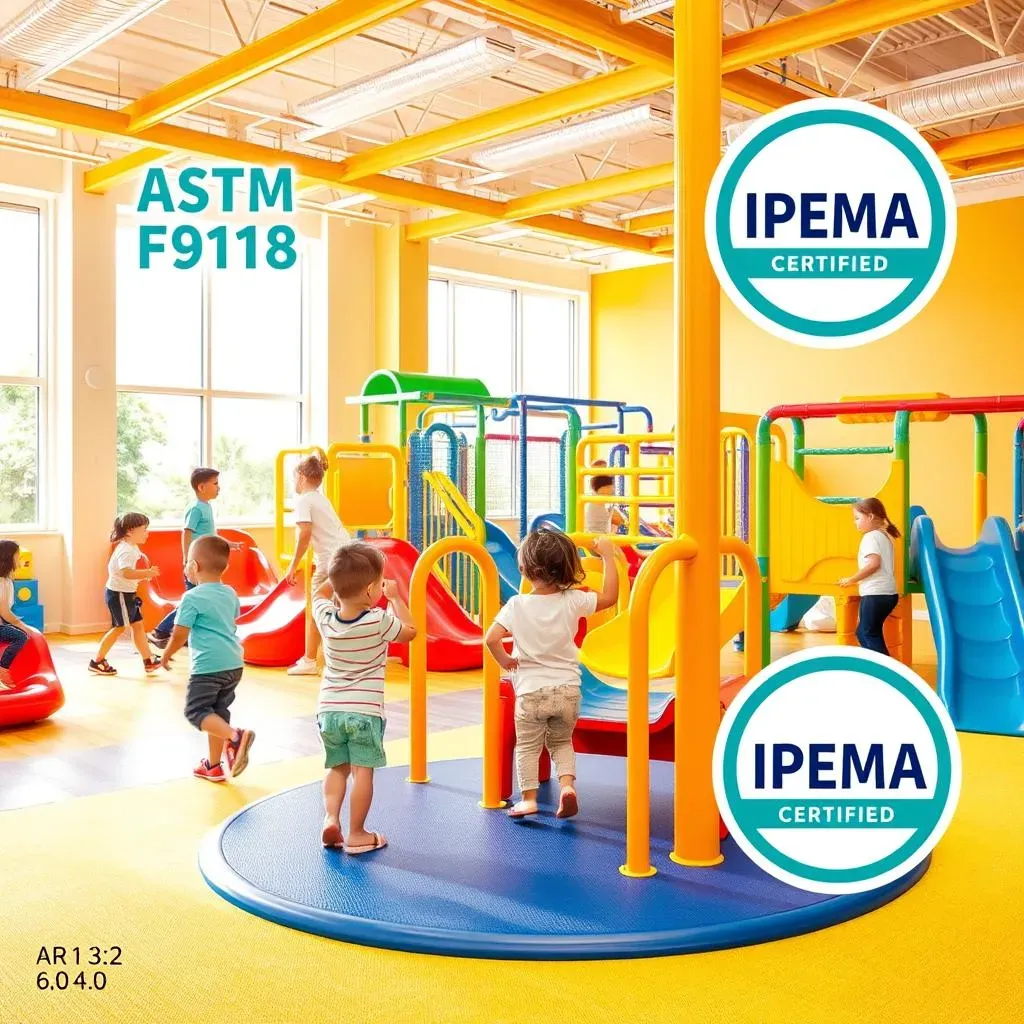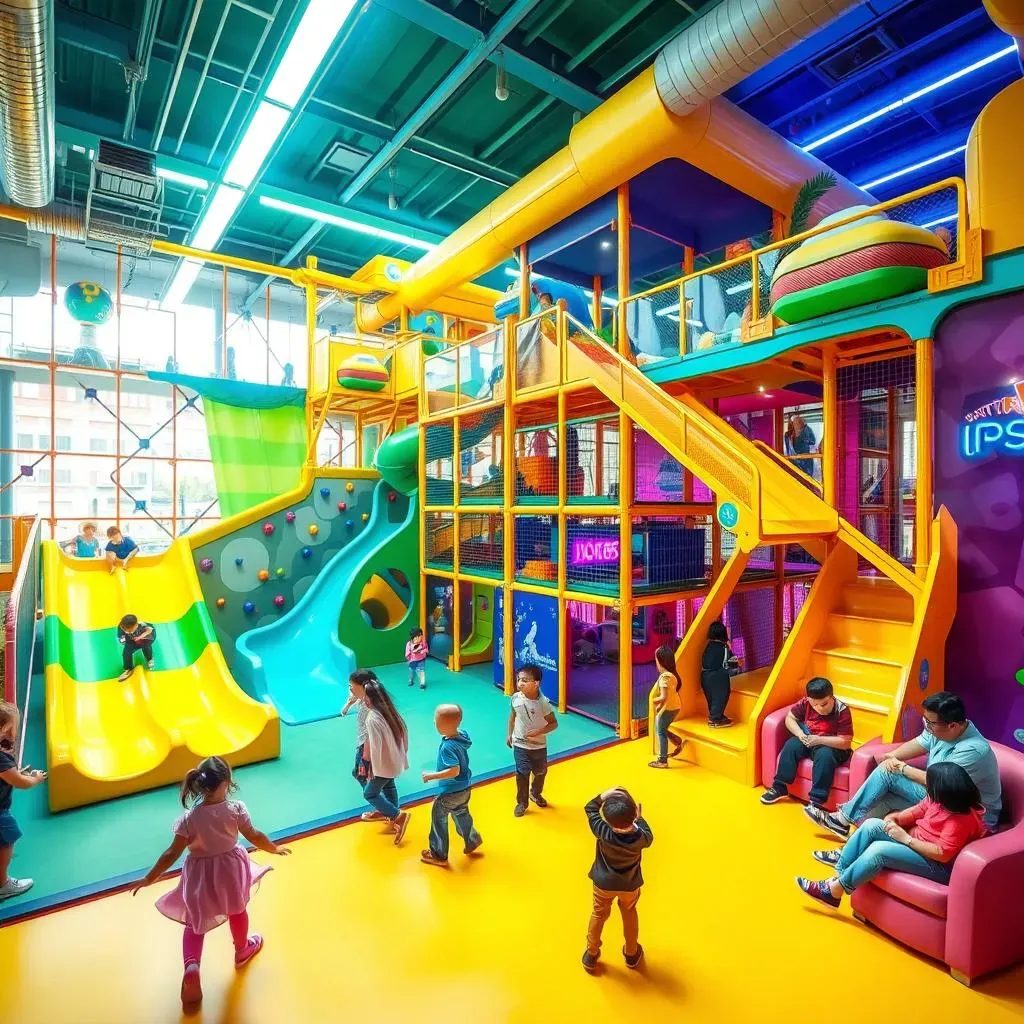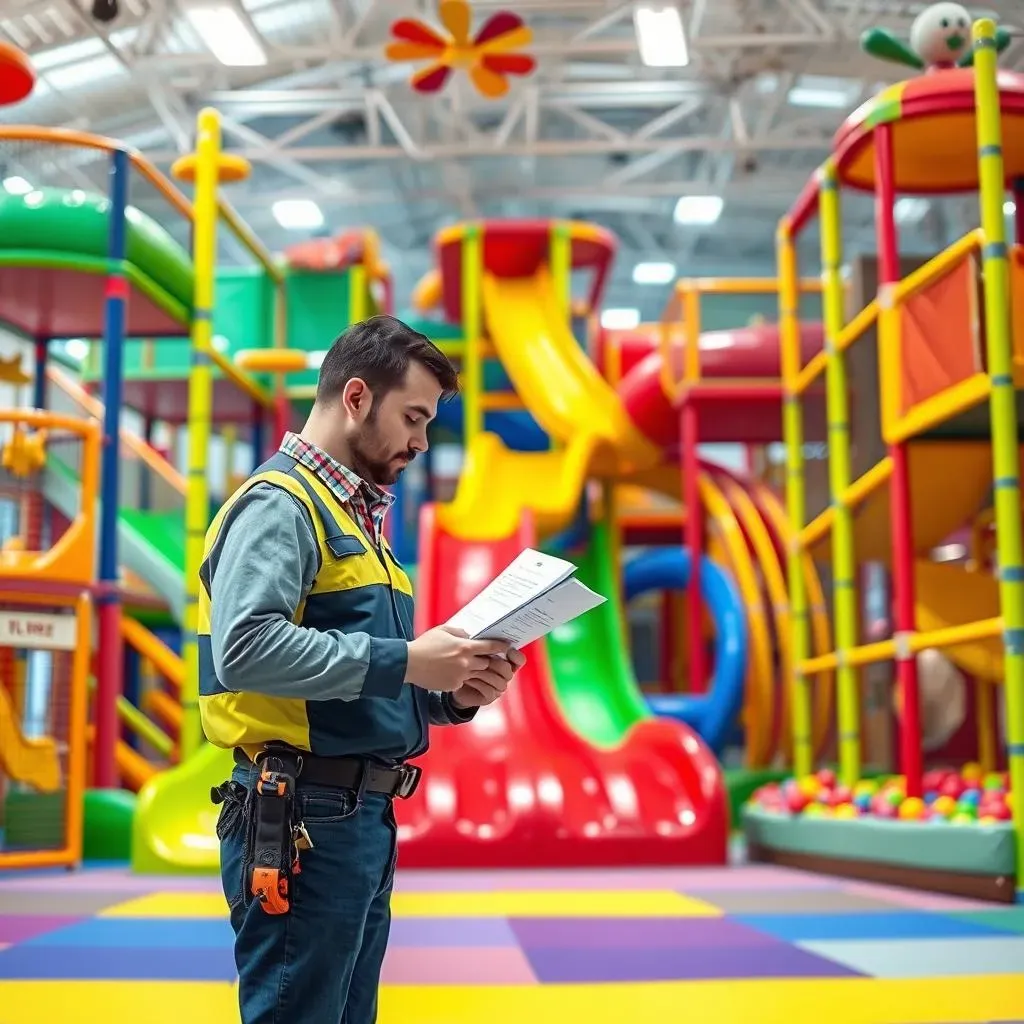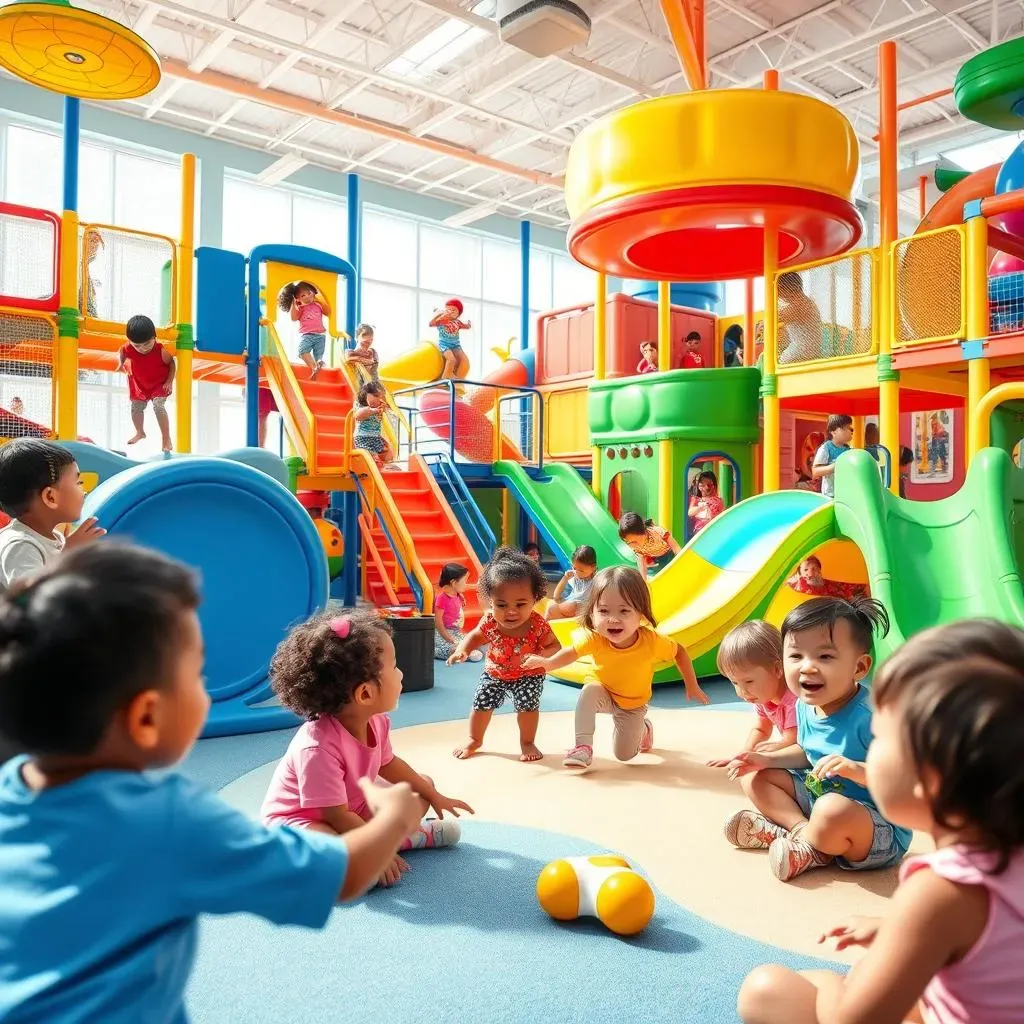Table of Contents
Looking to create a fun, safe, and engaging space for kids? Let's dive into the world of indoor playground equipment. Whether you're designing a family entertainment center, a daycare, or a community play area, the right equipment is crucial. This article will guide you through everything you need to know, from selecting the best equipment and understanding safety standards to designing custom layouts and maintaining your playground. We'll explore the benefits of indoor play for child development and provide practical tips to ensure your playground is a hit with kids and parents alike. Ready to transform your space into an exciting adventure zone? Let's get started!
Choosing the Right Indoor Playground Equipment for Your Space

Choosing the Right Indoor Playground Equipment for Your Space
Understanding Your Space and Needs
Before diving into catalogs and dreaming up elaborate structures, let's get real about your space. What are the dimensions? What's the weight capacity of the floor? Who are you trying to entertain? A toddler area will look drastically different from a playground designed for older kids. Think about the age range, the number of children you expect, and any specific needs like accessibility. Knowing these details upfront will save you time and prevent headaches down the road.
Consider the existing features of your space, too. Are there columns or oddly shaped corners you need to work around? Embrace those challenges! Custom playground designs can turn those quirks into unique and exciting play elements. It's all about maximizing what you've got and creating a space that's both functional and fun.
Navigating Equipment Options
now for the fun part: exploring the amazing world of indoor playground equipment! We're talking everything from classic ball pits and slides to climbing walls, tunnels, and interactive games. Each piece offers a different type of play experience, so think about the mix you want to create. Do you want to encourage physical activity, imaginative play, or a combination of both? Consider the following options:
- Soft Play Structures: Perfect for younger children, offering safe and padded environments for exploration.
- Climbing Walls: Great for developing strength, coordination, and problem-solving skills.
- Slides: A playground staple that provides thrilling fun for all ages.
- Interactive Games: Incorporate technology and gamification to keep kids engaged and entertained.
- Themed Play Areas: Transport kids to different worlds with custom-designed themes, such as jungles, castles, or outer space.
Don't be afraid to get creative! Combine different elements to create a dynamic and engaging play space that caters to a variety of interests and abilities. And remember, quality matters. Invest in durable, well-made equipment that can withstand heavy use and last for years to come.
Prioritizing Safety and Compliance
Let's talk safety – because nothing is more important than protecting the little ones. When choosing the right indoor playground equipment for your space, make sure it meets or exceeds all relevant safety standards and regulations. Look for certifications from organizations like ASTM International and the International Play Equipment Manufacturers Association (IPEMA). These certifications ensure that the equipment has been tested and meets rigorous safety requirements.
Pay close attention to the materials used in the equipment. Opt for non-toxic, durable materials that are easy to clean and maintain. Check for features like padded surfaces, safety netting, and age-appropriate designs. Regular inspections and maintenance are also crucial for keeping your playground safe and in good condition. After all, a safe playground is a happy playground!
Here’s a handy checklist to ensure you're prioritizing safety:
- Verify certifications (ASTM, IPEMA).
- Inspect materials for toxicity and durability.
- Check for proper padding and safety netting.
- Ensure age-appropriateness of equipment.
- Establish a regular inspection and maintenance schedule.
Safety Standards and Regulations for Indoor Playground Equipment

Safety Standards and Regulations for Indoor Playground Equipment
Navigating the Regulatory Landscape
Alright, let's get into the nitty-gritty of safety standards and regulations for indoor playground equipment. It might sound like a snooze-fest, but trust me, this is where you ensure kids have fun without anyone getting hurt. In the U.S., the big players are ASTM International and the Consumer Product Safety Commission (CPSC). ASTM sets voluntary standards that are widely adopted, while the CPSC enforces mandatory regulations to protect the public from unreasonable risks of injury or death.
Understanding these guidelines is essential. They cover everything from the height of guardrails and the impact-absorbing qualities of surfaces to the spacing between components to prevent entrapment. Ignoring these standards? You're not just risking injuries, you're also opening yourself up to potential lawsuits and a whole heap of bad publicity. So, do your homework and make sure your playground is up to snuff.
Key Safety Certifications and What They Mean
When you're shopping for indoor playground equipment, you'll likely see a bunch of certifications thrown around. What do they all mean? Let's break it down. ASTM F1918 is the standard for indoor play equipment, covering everything from design and manufacturing to installation and maintenance. IPEMA certification means that the equipment has been independently verified to meet ASTM standards. These certifications aren't just nice-to-haves; they're a sign that the manufacturer takes safety seriously.
Don't be shy about asking manufacturers for proof of certification. A reputable company will be happy to provide documentation and answer any questions you have about safety compliance. Remember, investing in certified equipment is an investment in the well-being of the children who will be using your playground. It's peace of mind, knowing you've done everything you can to create a safe and enjoyable play environment.
Certification | What It Means | Why It Matters |
|---|---|---|
ASTM F1918 | Standard for indoor play equipment | Covers design, manufacturing, installation, and maintenance |
IPEMA | Independent verification of ASTM compliance | Ensures equipment meets rigorous safety standards |
Designing Custom Indoor Playgrounds: Equipment and Layout Ideas

Designing Custom Indoor Playgrounds: Equipment and Layout Ideas
Maximizing Space and Flow
Alright, let's unleash our inner playground architects! Designing custom indoor playgrounds is where the magic truly happens. Forget cookie-cutter setups – we're talking about creating a space that's uniquely yours, reflecting your brand, and perfectly tailored to your target audience. Start by considering the flow of the playground. How will kids move from one area to another? You want a natural, intuitive path that encourages exploration and minimizes bottlenecks. Think about sightlines, too. Can parents easily supervise their children from different vantage points? A well-designed layout not only enhances the play experience but also contributes to safety and peace of mind.
Consider zoning your playground into different areas based on age and activity. A designated toddler zone with soft play structures and sensory activities can keep the little ones safe and engaged, while older kids can tackle more challenging climbing structures and interactive games. Use color, lighting, and theming to create distinct zones that appeal to different interests and age groups. And don't forget about seating areas for parents! Comfortable benches or lounge areas can make the playground a more inviting and enjoyable space for the whole family.
Theming and Aesthetics
Let's face it, a playground that looks cool is way more appealing than a drab, generic one. Designing custom indoor playgrounds lets you unleash your creativity with theming and aesthetics. Whether you're going for a jungle adventure, an underwater wonderland, or a futuristic cityscape, the possibilities are endless. Theming can be incorporated through color schemes, murals, custom-designed play structures, and even sound effects and lighting. A well-executed theme can transport kids to another world and spark their imaginations.
Consider your target audience when choosing a theme. What are their interests? What kind of stories and characters do they love? A playground designed for younger children might feature bright colors, friendly animals, and familiar characters, while a playground for older kids might incorporate more sophisticated themes, such as science fiction, adventure, or sports. Don't be afraid to get input from kids themselves! Involve them in the design process to ensure that the playground reflects their interests and preferences. After all, they're the ones who will be playing there!
Incorporating Unique and Innovative Equipment
Want to take your indoor playground equipment to the next level? Think beyond the standard slides and ball pits and explore unique and innovative equipment options. Interactive climbing walls, augmented reality games, and custom-designed obstacle courses can add excitement and challenge to your playground. These types of features not only provide physical activity but also promote cognitive development, problem-solving skills, and teamwork.
Consider incorporating elements that cater to different sensory needs. Sensory panels, textured surfaces, and calming lighting can create a more inclusive and welcoming environment for children with autism or other sensory sensitivities. Don't be afraid to experiment with new technologies and design concepts. The world of indoor playground equipment is constantly evolving, so stay up-to-date on the latest trends and innovations. By incorporating unique and innovative equipment, you can create a playground that stands out from the crowd and offers an unforgettable play experience.
Equipment Type | Benefits | Considerations |
|---|---|---|
Interactive Climbing Walls | Develops strength, coordination, and problem-solving skills | Requires adequate space and safety measures |
Augmented Reality Games | Promotes cognitive development and teamwork | Needs reliable technology and maintenance |
Sensory Panels | Creates an inclusive environment for children with sensory sensitivities | Should be durable and easy to clean |
Maintaining and Inspecting Your Indoor Playground Equipment

Maintaining and Inspecting Your Indoor Playground Equipment
Creating a Maintenance Schedule
so you've got this amazing indoor playground equipment, but it’s not a "set it and forget it" situation. Regular maintenance is key to keeping everything safe and fun for years to come. Think of it like your car – you wouldn't skip oil changes, right? Start by creating a detailed maintenance schedule. This should include daily, weekly, monthly, and annual tasks. Daily checks might involve looking for obvious hazards like loose screws or torn padding. Weekly tasks could include wiping down surfaces and checking for wear and tear. Monthly inspections should be more thorough, involving tightening bolts and lubricating moving parts. And annually, it's wise to bring in a certified inspector for a comprehensive assessment.
Be specific in your schedule. List exactly what needs to be done, who's responsible, and when it should be completed. Keep a log of all maintenance activities, noting any repairs or replacements. This not only helps you stay organized but also provides a valuable record for insurance purposes. And remember, prevention is always better than cure. Addressing minor issues early can prevent them from becoming major problems down the road, saving you time, money, and potential headaches.
Performing Regular Inspections
Inspections are your first line of defense against accidents and injuries. Regular, thorough inspections can help you identify potential hazards before they cause harm. Train your staff to conduct daily visual inspections, looking for things like loose hardware, damaged components, and worn surfaces. Encourage them to report any concerns immediately. In addition to daily checks, schedule more comprehensive weekly and monthly inspections. Use a checklist to ensure that you're covering all the key areas. Pay close attention to high-traffic areas and components that are subject to heavy use.
Don't underestimate the importance of professional inspections. A certified playground safety inspector can identify hidden problems and provide expert recommendations for repairs and upgrades. They can also help you ensure that your playground meets all relevant safety standards and regulations. Regular inspections not only protect children but also demonstrate your commitment to safety and help you avoid potential liability issues. A well-maintained playground is a safe playground, and a safe playground is a happy playground!
The Benefits of Indoor Playground Equipment for Child Development

The Benefits of Indoor Playground Equipment for Child Development
Physical Health and Development
Let's kick things off with the obvious: indoor playground equipment is fantastic for getting kids moving! In a world increasingly dominated by screens, providing a safe and engaging space for physical activity is more important than ever. Playgrounds help children develop gross motor skills like running, jumping, climbing, and sliding. These activities strengthen muscles, improve coordination, and enhance cardiovascular health. Plus, it's just plain fun! When kids are having a blast, they're more likely to stay active and develop healthy habits that will last a lifetime. It's a win-win!
But it's not just about burning energy. Indoor playgrounds also offer opportunities for developing fine motor skills. Activities like grasping, manipulating objects, and navigating through tunnels help children refine their hand-eye coordination and dexterity. These skills are essential for tasks like writing, drawing, and using tools. By providing a variety of play experiences, indoor playgrounds support the holistic physical development of children, preparing them for success in school and beyond.
- Gross motor skill development
- Fine motor skill enhancement
- Improved cardiovascular health
- Muscle strengthening
- Coordination and balance improvement
Cognitive and Social-Emotional Growth
Alright, let's dive into the brainy stuff! The benefits of indoor playground equipment for child development extend far beyond the physical realm. Playgrounds are powerful learning environments that stimulate cognitive development in a variety of ways. Problem-solving, critical thinking, and spatial reasoning are all put to the test as children navigate through complex structures and figure out how to overcome challenges. Imaginative play, a staple of most playgrounds, fosters creativity, language development, and social skills. When kids pretend to be pirates, astronauts, or superheroes, they're not just having fun – they're expanding their minds!
Social-emotional development is another key area where indoor playgrounds shine. Playgrounds provide opportunities for children to interact with their peers, learn to share, take turns, and cooperate. They also learn how to negotiate conflicts, communicate their needs, and empathize with others. These social skills are essential for building healthy relationships and navigating the complexities of the social world. A well-designed playground can be a microcosm of society, where children learn valuable lessons about cooperation, communication, and empathy.
Developmental Area | Benefits | Examples |
|---|---|---|
Cognitive | Problem-solving, critical thinking, spatial reasoning | Navigating obstacle courses, solving puzzles, building structures |
Social-Emotional | Cooperation, communication, empathy | Sharing toys, taking turns, resolving conflicts |
Creative | Imagination, storytelling, role-playing | Pretending to be pirates, astronauts, or superheroes |
Sensory Stimulation and Inclusivity
Let's not forget about the importance of sensory stimulation! Indoor playground equipment can be designed to engage children's senses in a variety of ways. Textured surfaces, colorful lights, and auditory elements can create a stimulating and enriching play environment. Sensory play is particularly beneficial for children with autism or other sensory sensitivities, providing opportunities for them to explore and regulate their senses in a safe and controlled environment. A well-designed sensory play area can be a calming and therapeutic space for children who may be overwhelmed by other environments.
Inclusivity is another key consideration when designing an indoor playground. Ensure that the playground is accessible to children of all abilities, including those with physical disabilities. Ramps, wide pathways, and adaptive equipment can make the playground more inclusive and welcoming for everyone. By creating an inclusive play environment, you're sending a message that all children are valued and deserve the opportunity to play and learn alongside their peers. An inclusive playground is a happy playground, where all children can thrive and reach their full potential.
Conclusion: Creating Joyful and Safe Play Experiences with Indoor Playground Equipment
Investing in indoor playground equipment is more than just buying play structures; it's about creating environments where children can thrive, learn, and have fun in a safe and controlled setting. From selecting the right equipment and adhering to stringent safety standards to designing innovative layouts and ensuring regular maintenance, every detail contributes to a positive play experience. By understanding the developmental benefits and prioritizing safety, you can build an indoor playground that not only entertains but also fosters growth and well-being for children in your community.